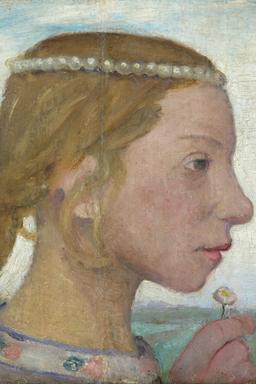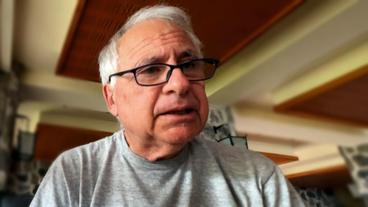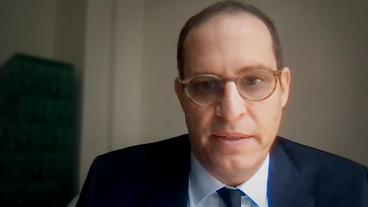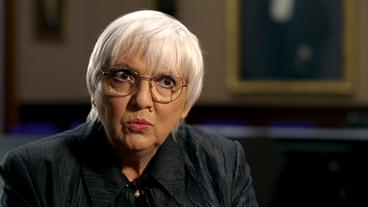News:
Nazi looted art in the Hamburg Kunsthalle?
Ulf Kalkreuth
Why a Jewish family struggles in vain for a picture
Robert Graetz was a Berlin textile entrepreneur. His son fled Germany in 1938, but Graetz stayed. He didn't feel like a Jew, but rather a German. He didn't want to believe what was happening. In 1939 he had to close his company. Afterwards, Robert Graetz lost everything: his villa and his art collection within it - over 200 valuable pictures.
Jewish property at a bargain price
At the same time this man went on a shopping spree: Conrad Doebbeke. NSDAP member, lawyer and art dealer. He bought at bargain prices from Jewish art owners who had to sell to finance their escape.
Hamburger Kunsthalle
That's how this picture came into Doebbeke's hands: "Girl's Head". the expressionist painter Paula Modersohn-Becker. According to descendants, it hung in Robert Graetz' Villa.
On April 14, 1942, Robert Graetz was deported to the East. His possessions had been stolen - "forfeited," the transport list notes. Robert Graetz was murdered in the Holocaust.
Heirs see no willingness to talk
 Paula Modersohn-Becker: Girl's Head
Paula Modersohn-Becker: Girl's Head
The painting has been in the possession of the Hamburger Kunsthalle since 1958 and for over 20 years it has been listed on the LostArt database as a suspected Nazi-looted art object. For three years, the grandson has been trying to get back the picture of his grandfather, who was murdered by the Nazis.
Roberto Graetz was born in Argentina while his parents were in exile - we interviewed him a few days ago. The three-year unsuccessful fight for return has frustrated the 72-year-old.
"We are very angry about this, very, very angry. The Hamburger Kunsthallee hasn't done much, nothing, in three years. They take us as opponents, not as victims, but we victims don't live that long."

Roberto Graetz sees no willingness to talk.
Graetz is represented by a law firm. They are trying to get the Hamburger Kunsthalle to enter into a serious dialogue about the picture - so far without success, as lawyer Ewald Volhard explains:
"We have drawn up a so-called claim, i.e. a request for restitution to the Hamburger Kunsthalle. This letter was sent out in December 2020 with all the attachments and documents, all the evidence we have - and then we didn't hear anything for a long time."
Hamburger Kunsthalle denies “object identity”
Graetz's lawyer explains to us that the Hamburger Kunsthalle has only commented on the matter once. This is done with an argument that museums often use to fend off claims and gain time: they deny the so-called “object identity”.

Alexander Klar, Director Hamburger Kunsthalle
Alexander Klar, director of the Hamburger Kunsthalle, says: "It is simply not clear whether this work is the one that hung in the Robert Graetz collection. And research is being done on this."
However, the research has so far been fruitless. However, there is one fact that has been known for a long time: On its homepage, the Kunsthalle writes about the provenance of the picture, saying that it was a gift from Else Doebbeke. The widow of the Nazi art dealer Konrad Doebbeke, who delighted numerous German museums with his looted art bargains. Every museum should actually pay attention: When asked what he knew about Else Doebbeke, Klar replied: "Personally, nothing."
25 years of Washington Declaration: Only 23 cases decided
A conference met in Washington 25 years ago, in December 1998. 44 states signed a declaration that they would henceforth have "just and fair" Want to find solutions for the return or compensation of Nazi-looted art.

Rüdiger Mahlo from the Jewish Claims Conference criticizes the slow procedures.
It took Germany five years to create a commission for this. But it can only take action if the museums agree. The owners of the suspected stolen goods must therefore agree so that a decision can be made about their controversial works of art. This commission was only able to decide 23 cases in 20 years.
A week ago there was a celebration to mark the anniversary of the Washington Declaration. But there was nothing to celebrate, as Rüdiger Mahlo from the Jewish Claims Conference explains: "What we see today is that between three and seven percent of the paintings have been restituted. Over a period of 20 years. "That means if we continue at this rate, it will take us over 300 years."
Nazi Looted Art Commission urgently needs reform
The Nazi Looted Art Commission urgently needs to be reformed. The crucial point: The commission must finally be able to be called upon unilaterally by the descendants of the Nazi victims - without the consent of the museums. This reform has been failing for years due to resistance from the federal states that own the museums.
Bavaria provides a serious example of this failure. The state painting collections there contain the Picasso painting “Madame Soler”, which is estimated to be worth 50 million euros. Jewish heirs claim it. But Bavaria refuses to bring the case before the Advisory Commission - and so the Jewish descendants are left as supplicants.
Rüdiger Mahlo, Jewish Claims Conference, makes it clear what this means: “That means that they have been paying legal fees for 15 years, doing provenance research, only to end up not even being heard. Heard! "That's the minimum."

Minister of State for Culture Claudia Roth in the ttt interview
Minister of State for Culture Claudia Roth wants to bring through a reform of the commission by spring 2024: “We have reached an agreement with the states that there will be unilateral callability. One country has not agreed and that is Bavaria. And I believe that Bavaria cannot hold out if all the other federal states say: “Yes, we understand. We are political, we are morally obligated."
In late summer, Roberto Graetz asked about the “Girl's Head” case. by Paula Modersohn-Becker to be brought before the Advisory Commission. But the Hamburger Kunsthalle rejects this.
If Germany is serious about returning art objects that were stolen from Jews, then this commission must finally be given the right to intervene. Otherwise their existence will remain nothing but a moral gesture with no consequences.


